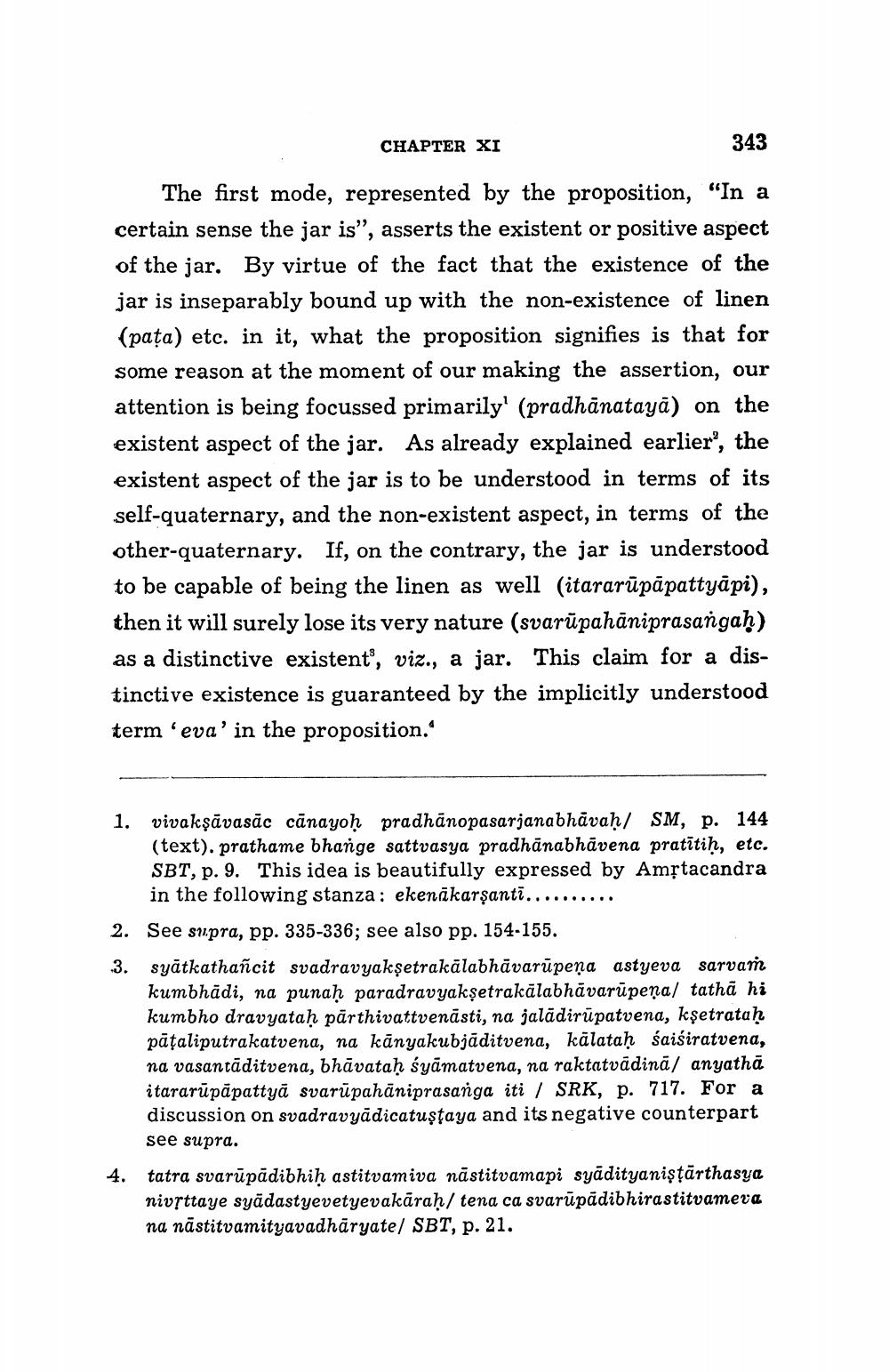________________
CHAPTER XI
343
The first mode, represented by the proposition, "In a certain sense the jar is", asserts the existent or positive aspect of the jar. By virtue of the fact that the existence of the jar is inseparably bound up with the non-existence of linen (pața) etc. in it, what the proposition signifies is that for some reason at the moment of our making the assertion, our attention is being focussed primarily' (pradhānatayā) on the existent aspect of the jar. As already explained earlier, the existent aspect of the jar is to be understood in terms of its self-quaternary, and the non-existent aspect, in terms of the other-quaternary. If, on the contrary, the jar is understood to be capable of being the linen as well (itararūpāpattyāpi), then it will surely lose its very nature (svarūpahāniprasangah) as a distinctive existent”, viz., a jar. This claim for a distinctive existence is guaranteed by the implicitly understood term 'eva' in the proposition.'
1. vivakşāvasāc cānayoḥ pradhānopasarjanabhāvah/ SM, p. 144
(text). prathame bhange sattvasya pradhānabhāvena pratītiḥ, etc. SBT, p. 9. This idea is beautifully expressed by Amộtacandra
in the following stanza: ekenākarşanti........ 2. See supra, pp. 335-336; see also pp. 154-155. 3. syātkathañcit svadravyakşetrakālabhāvarūpeṇa astyeva sarvar
kumbhādi, na punaḥ paradravyakşetrakālabhāvarūpeṇa/ tathā hi kumbho dravyataḥ pārthivattvenāsti, na jalădirūpatvena, kşetrataḥ pāțaliputrakatvena, na kanyakubjāditvena, kalataḥ saisiratvena, na vasantāditvena, bhāvataḥ śyāmatvena, na raktatvādinā/ anyathā itararūpāpattyā svarūpahāniprasanga iti / SRK, p. 717. For a discussion on svadravyādicatuștaya and its negative counterpart see supra. tatra svarūpādibhiḥ astitvamiva nāstitvamapi syādityanişțārthasya nivsttaye syādastyevetyevakāraḥ/ tena ca svarūpädibhirastitvameva na nāstitvamityavadhāryate/ SBT, p. 21.




